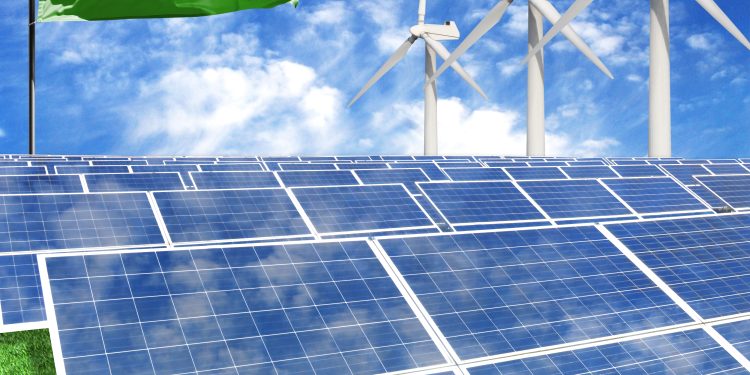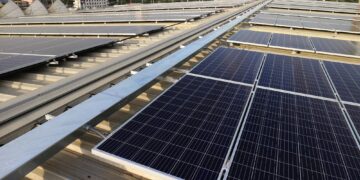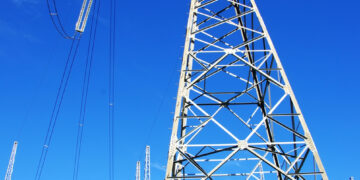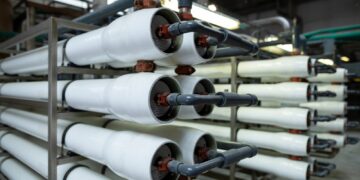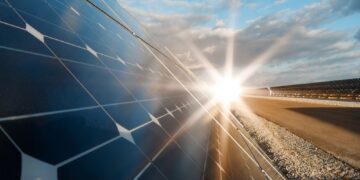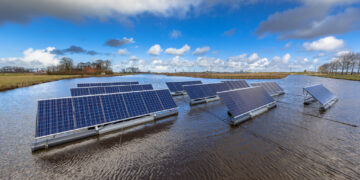The Kingdom of Saudi Arabia, once primarily known for its massive oil reserves, is now on a transformative journey towards sustainability. This shift towards embracing renewable energy sources is poised to redefine its economic future while addressing environmental concerns.
Recent figures from the International Renewable Energy Agency (IRENA) highlight a remarkable 219 percent year-on-year growth in renewable energy capacity in Saudi Arabia for 2023, reaching 2689 MW and surpassing regional peers.
The nation’s ambitious Saudi Vision 2030, initiated in 2016, aims to diversify energy sources and reduce dependence on oil. Originally targeting 9.5GW of green energy by 2030, the Kingdom has since elevated its goal to an impressive 130GW, driven by robust policies, competitive auctions, and solid financial strategies.
A report by GlobalData notes that renewable power projects under construction in Saudi Arabia exceeded 8GW at 2023’s end, with an additional 13GW in various development phases, thanks to auctions held in the last 18 months. The early part of 2024 saw ACWA Power securing a whopping $2.3 billion for 4.55GW of solar projects, with funding from a group of banks including Saudi Awwal Bank and HSBC.
The solar photovoltaic projects, namely Ar Raas 2, Saad 2, and Al Kahfah, are set to be established in the central and northern regions, with ACWA Power holding a 50.1 percent stake in each initiative.
Economic drivers and potential of Saudi’s renewable energy
An energy policy consultant, quoted by Al Arabiya English, points out that the economic benefits of reducing domestic fossil fuel consumption are a key motivator for Saudi’s renewable push, allowing more oil to be exported and enhancing economic resilience.
With natural gas overtaking oil in domestic power generation, there’s a strong incentive to minimize internal consumption. The Kingdom’s financial capability, plentiful renewable resources like solar and wind, and ample development land are cited as significant advantages for establishing large-scale renewable energy plants.
The country is also expected to lead in low-carbon technologies due to its position as a major hydrocarbon producer. Investments in cleaner energy and technologies like hydrogen and carbon capture are likely to increase as global pressure to reduce emissions intensifies.
However, the integration of renewable energy into the national grid requires advancements in flexibility systems, storage solutions, and infrastructure upgrades. The potential of geothermal power, particularly from the Red Sea’s geothermal reservoirs, is emphasized for its ability to provide a constant source of energy, aiding the transition to renewables.
Implications of clean energy investments on the economy
Nations across the globe, including those in the Middle East, are prioritizing clean energy investments. The MENA region plans to add 62GW of renewable capacity within five years, a significant increase from previous periods, as reported by the International Energy Agency (IEA). Solar is expected to account for the majority of this growth.
As part of this trend, Saudi Arabia is strategically channeling investments into clean energy to foster economic diversification. These efforts are seen as economically beneficial by analysts, promoting job creation, diversification, and profitability for investors.
According to a senior investment banking executive, the clean energy initiatives in Saudi Arabia are also setting the Kingdom as a frontrunner in climate technology and innovation. The global push for climate regulations opens new business avenues, with Saudi Arabia well-positioned to benefit from these emerging opportunities.
Moreover, the development of renewable energy projects generates surplus carbon credits, aiding in the reduction of emissions from other industries and enhancing economic competitiveness.
To support these initiatives, Saudi Arabia has launched a green financing framework to attract investments in sustainable projects through the issuance of green bonds and sukuk. This framework is a first for the central government and aligns with its goals to significantly reduce greenhouse gas emissions by 2030 and achieve net-zero emissions by 2060.
The framework also aims to broaden access to green capital, offering diverse and efficient funding mechanisms to maximize foreign investments and propel Vision 2030’s ambitious projects.
